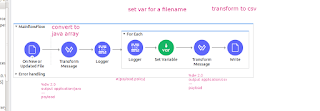Terraform expression consist of conditional operators like ==, != and functions that you can leverage to work with input values. For example, lets say you want to concatenate two variable together, you can do that using terraform. There are a whole lot of functions available which are categorized under string, numeric and collection functions . Lets have a look at where you can use these functions. Functions are typically classified as expresssion and you can use it within a terraform code. Example Let's have a look at the example below :- In this example, i am combining a couple of function together (chaining) and produce a list as the final output. This snippet shows where we can :- Disecting the code out further, we have substr functions, which attempts to get a subsection of a string except the last character. substr( data . azurerm_storage_account . paymentmonitorui . primary_web_endpoint , 0 , length ( data . azurerm_storage_account ...



